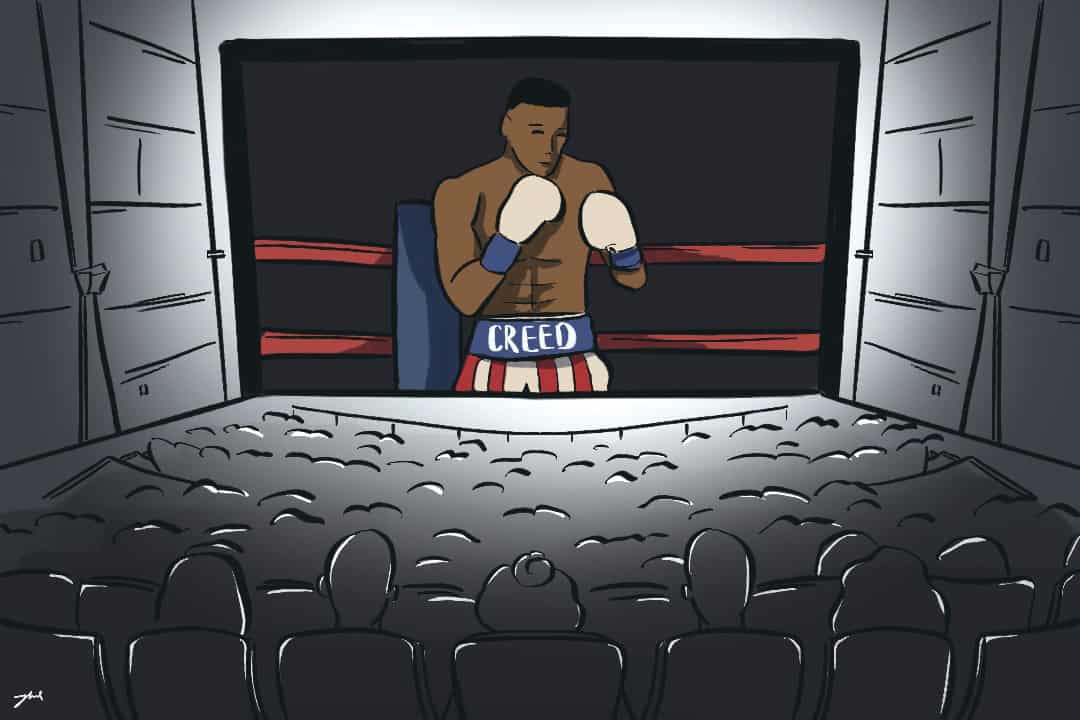Boxing is a very appealing sport for filmmakers. In September 2022, The Varsity published a list of the five best sports films — three of them are about boxing. More recently, Creed III was released and has received overwhelmingly positive reviews. Elsewhere, at UFC 285, Jake Gyllenhaal was spotted filming several boxing scenes for his upcoming movie, Road House.
The Varsity sat down with an associate professor at U of T’s Cinema Studies Institute, Bart Testa, to get an understanding of why boxing and movies are a match made in heaven.
The forbidden sport
Boxing films have a deep and rich history. “[In] the 1900s, the two most popular genres… were boxing films and Jesus movies,” Testa explained. “The world of boxing was a great opportunity for filmmakers, because it had such a powerful spectacle.”
Due to boxing’s proclivity to be brutally violent, it was illegal until the 1920s. While it fell behind other sports in terms of popularity around the 1980s, a part of its appeal was the fact that it was forbidden; therefore, boxing films began as a kind of “sports pornography.” “What you weren’t allowed to see in person, you could see in the movies,” said Testa.
Other sports, like football and baseball, were legal, already popular, and usually had well-hidden criminal activities. Furthermore, Testa added: “Individual combat is part of the appeal.” Compared to other sports, no one else is there in the ring to help the boxer win.
The tragic boxer
The commercialization of boxing meant that the forbidden appeal declined, though a level of eroticism has remained. Nevertheless, among more contemporary American boxing films, there are common themes that still attract audiences.
The first is the personal struggle a boxer experiences inside and outside the ring. “The boxer is someone with an unstable personality,” Testa said. “The violence in boxing usually represents… the manner of character.” For example, look at the unstable Rocky Graziano in Somebody Up There Likes Me and the hot-headed champion Jake LaMotta in Raging Bull.
The aggression LaMotta executes in the ring leads to an aggressively toxic and abusive relationship with his family. This personality trait among boxers often adds a tragic dimension to films about boxing.
“The boxer comes to a tragic situation because of corruption within boxing,” Testa explained. In The Set-Up, Stoker, a washed up fighter with a relentless determination to win, enters a boxing match, unaware that his manager has bet against him. This corruption creates melodrama and ultimately harms Stoker’s boxing career. In Raging Bull, as LaMotta’s career develops, his relationships with his wife and brother devolve to a point of no return.
“I don’t deny that violence is part of the appeal,” he added. “But when things become violent, they break certain norms that belong to boxing.” In Raging Bull, after LaMotta’s wife nonchalantly compliments his next opponent’s appearance, LaMotta goes overboard and brutally beats him up in the ring beyond the norms of the sport. Meanwhile, Million Dollar Baby gets gruesome only when the main character, Maggie Fitzgerald, is hit with an illegal punch.
Testa said that in boxing films, “When something gets really violent, something’s gone wrong.” Boxing movies showcase the sport as a duel between two rivals. However when a fighter brutally hurts his opponent, this violence is unorthodox to boxing movies as a whole. In Raging Bull, LaMotta brutally loses his middleweight championship, largely due to his brother and wife’s lack of support for him. While boxing is inherently violent, events that occur outside the ring can have just as much of an effect, or more, on the boxer in the movie.
The underdog
Another appeal of contemporary boxing films is the boxer’s identity and the narratives that these identities compel. “[Boxing] is often an opportunity for someone who belongs to a degraded ethnic group to triumph over his class position,” Testa explained.
In the early history of boxing films, these boxers were typically of Irish or Italian descent, like LaMotta or Rocky Balboa, and now these films tend to include Black people, like Adonis Creed. The protagonist’s underprivileged identity helps stipulate an appealing underdog narrative.
“There’s almost always an underdog story,” Testa stated. In Rocky, Rocky Balboa, a poor small-time boxer, is a clear underdog to his opponent, the heavyweight champion, Apollo Creed. While the first Creed film had Adonis Creed, Apollo’s son, serving as an underdog, Creed III slightly flips this common narrative, as Adonis is now a thriving boxer. Instead, his opponent — Damian Anderson — is now the underdog, as he aims to fulfill a dream that was interrupted by his incarceration. This variation makes for a more unique viewing experience, but also continues exploring the intersection of class and race.
In the history of cinema, the boxer is someone who fights against the rest of the world — and even themselves. Boxing films aren’t just successful because of the primal acts of violence instigated by the fighters in the ring. Importantly, boxing stands as a method that filmmakers use to highlight the darkness within individuals and societies.


